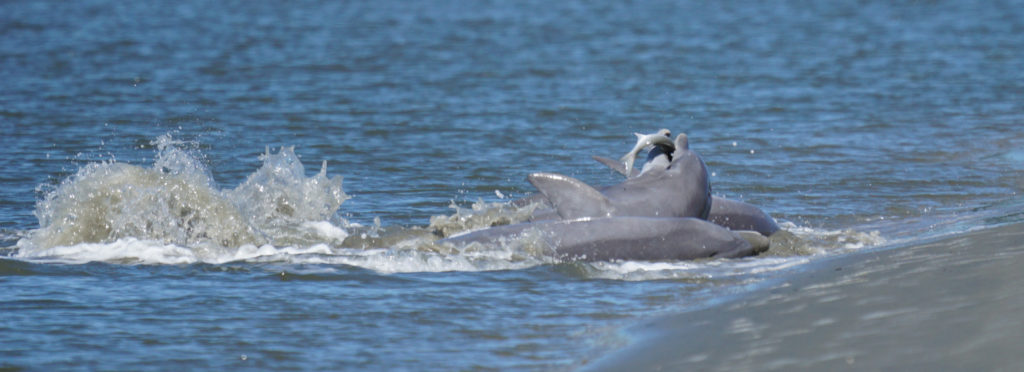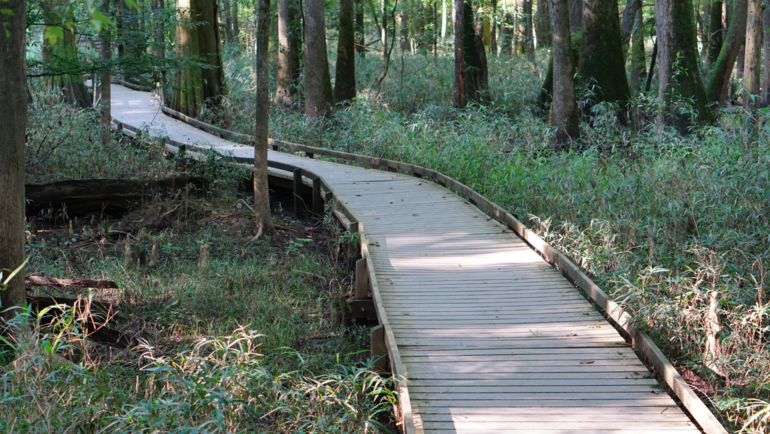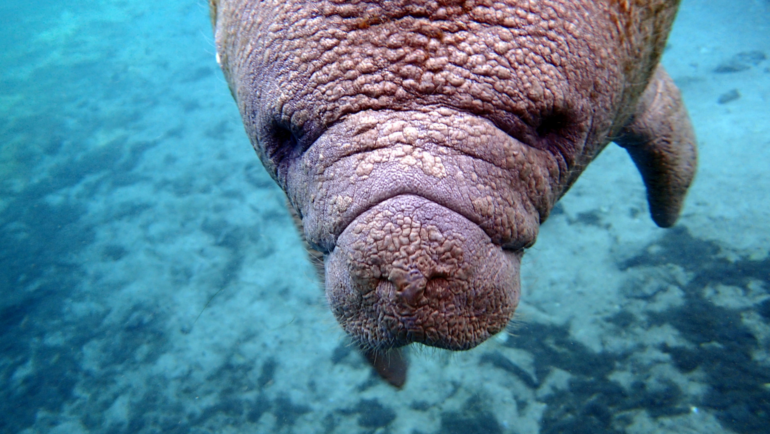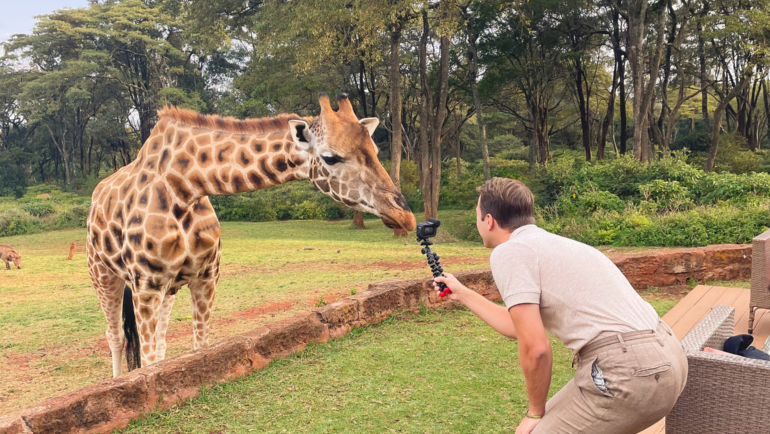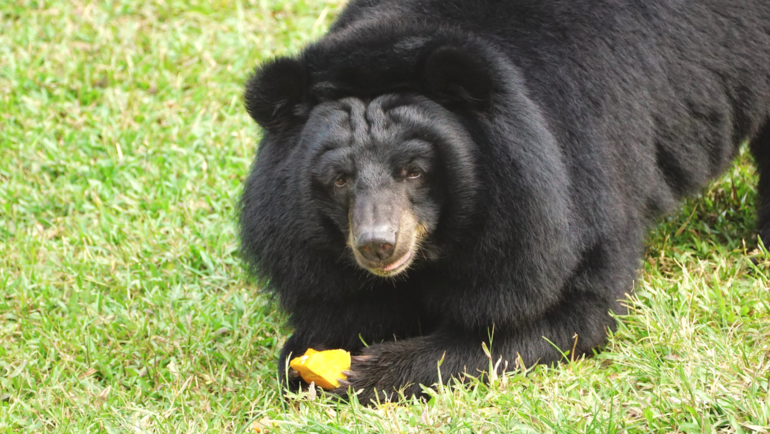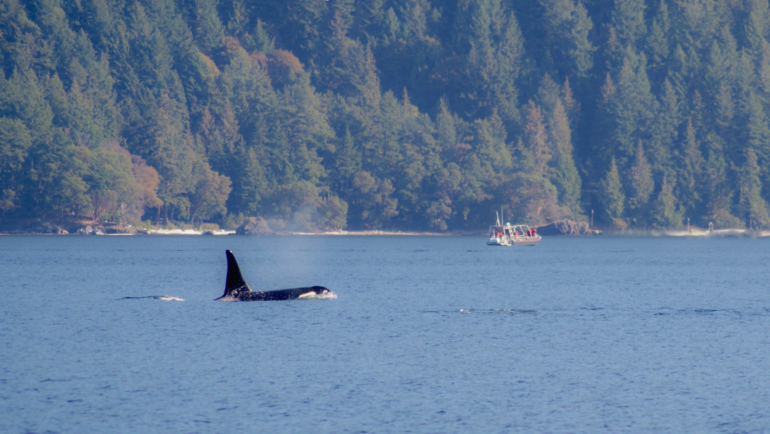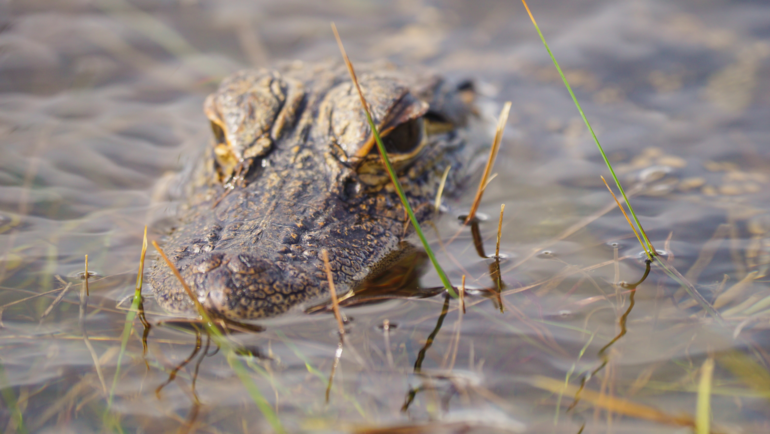No wake? Idle speed? To most, the term ‘no wake zone’ doesn’t mean a whole lot. But we all know speeding boats with razor-sharp propellers, don’t mix well with wildlife. In simplest terms a no wake zone is a section of waterway with a strict speed limit. Usually signaled by highway-style signage, these zones require boaters to observe their slowest-possible vessel speed. Usually, no greater than 5 miles per hour, no wake zones are enforced for many different reasons. Minimizing wake, and the waves they create, helps to protect shorelines, people and their property, and of course wildlife!
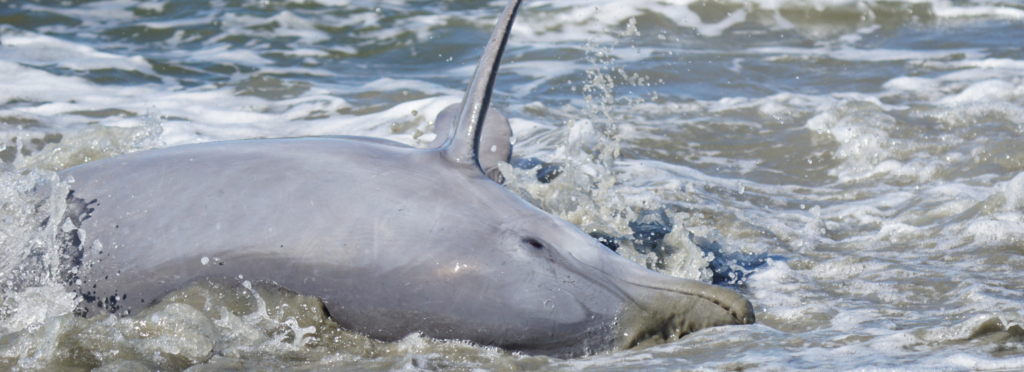
Slowing Down for Strand Feeding Dolphins
This isn’t to say that boaters and wildlife cannot share waterways, of course they can, but our human impact needs to be regulated to ensure nature can thrive. In the case of South Carolina’s Lowcountry, this heated debate flows between the islands of Kiawah and Seabrook, just south of Charleston harbor. This inlet is the prime feeding ground for the state’s iconic resident bottlenose dolphins, the ones most famous for their strand feeding behaviors. Captain Sam’s Inlet is where the Kiawah River meets the Atlantic Ocean, flanked by slopped sandy shores during low tides. These characteristics are what make this specific area a critical habitat for strand feeding, which is no easy feat and is practiced with precision to ensure the dolphin’s own safety and success.
“Strand feeding isn’t just any feeding technique,” says Lauren Rust, executive director of Lowcountry Marine Mammal Network, a nonprofit based in Charleston, South Carolina. “It’s so rare, people come from around the world to witness it. In 2020 alone, two wildlife film crews came to this location to film strand feeding behaviors.”
Captain Sam’s Inlet is the only place in the country, and possibly the world where this behavior is occurring this methodically – day after day. These resident bottlenose dolphins have been observed strand feeding for nearly 12 hours each day. Learned behaviors like strand feeding represent a unique example of dolphin culture. But as with any cultural practice, disruptions can easily throw generations worth of knowledge and skills. Actions taken towards protecting this critical habitat will decide if this unique behavior remains. Or if this unique behavior disappears from the South Carolina Lowcountry.
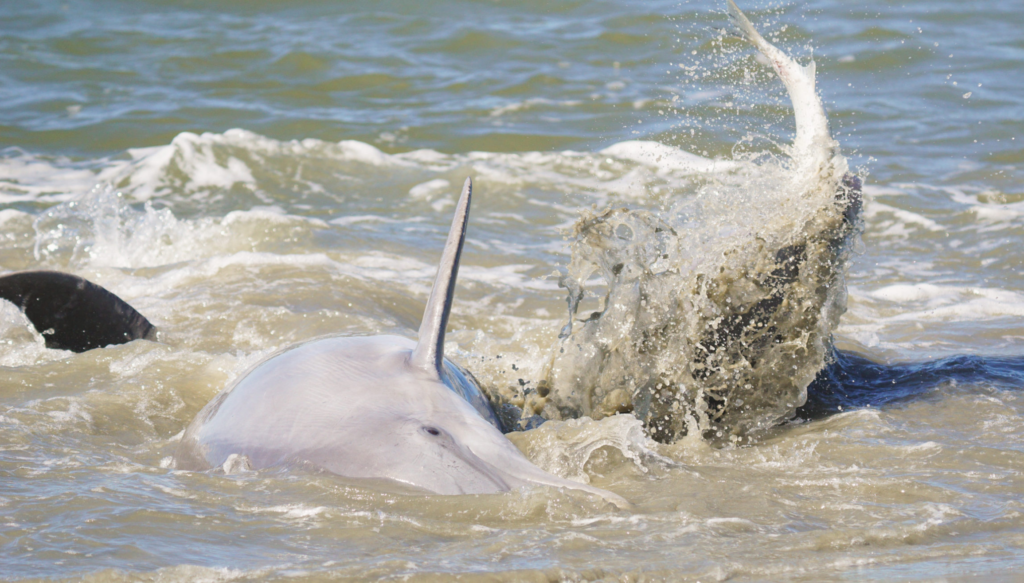
Need for a No Wake Zone
The Lowcountry Marine Mammal Network is pushing for extra protections in Captain Sam’s Inlet, where the resident dolphins depend on successful strand feeding. But the South Carolina Department of Natural Resources (SCDNR) has denied their request for a no wake zone on multiple occasions for that specific area.
“This behavior can be immediately halted when a boat, going above idle speed, cruises through and disrupts both the fish and any feeding attempts,” says Rust. “Often the dolphins dive, abandon feeding, or leave the inlet altogether. This leaves the dolphins without a meal.”
Originally in 2020, their first request was denied due to the inlet not meeting SCDNR’s criteria for a no wake zone. According to the official state website, South Carolina requires that boaters observe a ‘no wake zone’ within 50 feet of an anchored vessel, wharf, pier, or person in the water. SCDNR considers boater safety and how the designated zone will interfere with or aid navigation in congested areas. But no mention of protecting wildlife or their habitats is included in a no wake zone designation. For many, this lack of priority towards ‘natural resources’ seems odd considering the mission of SCDNR is to serve as the principal advocate for and steward of South Carolina’s natural resources, according to their website.
“I believe the state has an obligation to protect all wildlife,” says Rust. “Although the state doesn’t have jurisdiction over marine mammals or the laws surrounding them, they can protect them in other ways, such as educating the public with signage, no wake zones when necessary, protecting habitats critical to dolphins, and enforcing federal laws.”
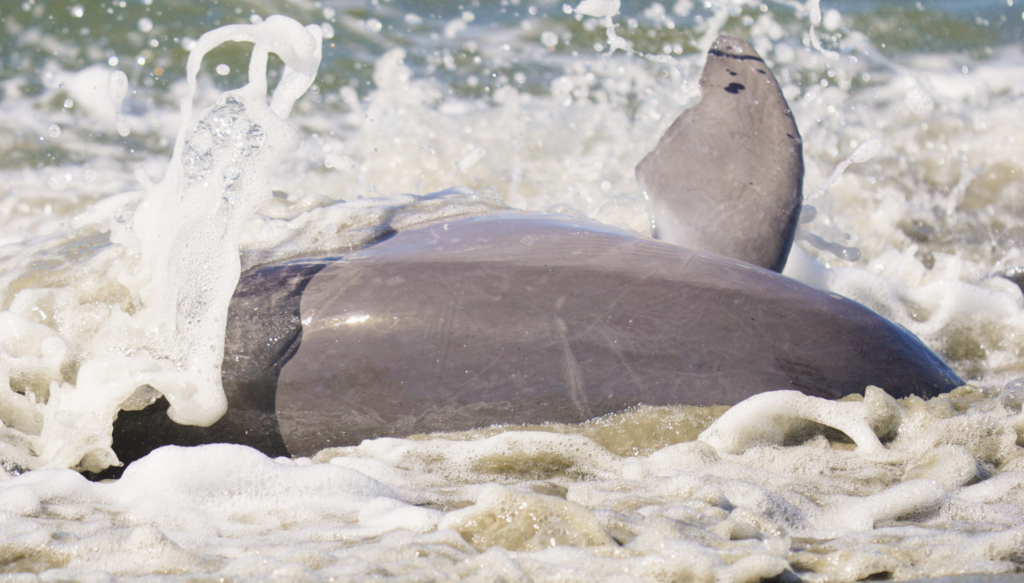
Protecting South Carolina’s Wildlife
Even with letters of support from the towns of Kiawah Island and Seabrook Island, the Lowcountry Marine Mammal Network has only been denied approval for a no wake zone since the inlet did not pose any threat to boaters themselves. Their work will continue, and they proceed in urging the SCDNR to act in protecting this habitat and safeguarding this incredibly special behavior.
“I fear these animals will eventually shift their feeding habits because we didn’t protect the inlet in time,” says Rust. “This is a warning that we shouldn’t ignore.”
